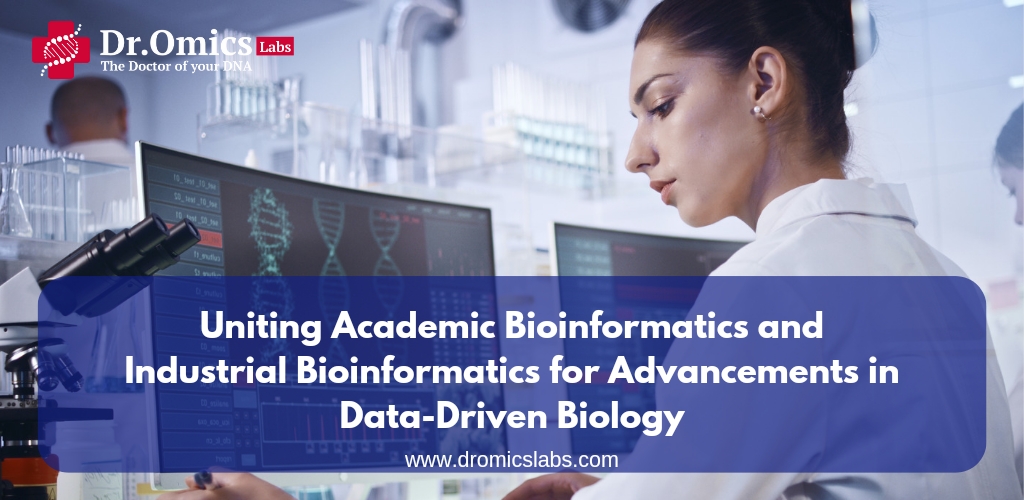The field of bioinformatics has revolutionized our understanding of biology by harnessing the power of computational methods to analyze and interpret vast amounts of biological data. In recent years, machine learning (ML) has emerged as a transformative tool in bioinformatics, enabling researchers to make groundbreaking discoveries and address complex challenges in areas such as genomics, proteomics, and drug discovery.
ML algorithms are designed to learn from data and make predictions or decisions without explicit programming. In bioinformatics, ML algorithms are trained on large datasets of biological data, such as DNA sequences, protein structures, and gene expression profiles. By analyzing these datasets, ML algorithms can identify patterns and relationships that would be difficult or impossible to detect manually.
Types of Machine Learning Algorithms used in Bioinformatics
ML algorithms can be broadly categorized into three main types: supervised learning, unsupervised learning, and reinforcement learning. Each type of algorithm serves a distinct purpose and has specific applications in bioinformatics.
Supervised Learning
Supervised learning algorithms are trained on labeled data, where the desired output is known for each input. The algorithm learns to map the input data to the corresponding output, allowing it to make predictions for new, unseen data. In bioinformatics, supervised learning algorithms are often used for classification tasks, such as predicting protein function or identifying disease-causing mutations.
Examples of supervised learning algorithms commonly used in bioinformatics include:
- Support Vector Machines (SVMs): SVMs are a powerful supervised learning algorithm that can be used for classification and regression tasks. In bioinformatics, SVMs are often used to classify genes based on their expression patterns or to predict protein function.
- Naive Bayes: Naïve Bayes is a simple yet effective supervised learning algorithm that is based on Bayes’ theorem. In bioinformatics, naïve Bayes is often used to classify proteins based on their amino acid sequences or to predict the secondary structure of proteins.
- Decision trees: Decision trees are a versatile supervised learning algorithm that can be used for classification, regression, and feature selection. In bioinformatics, decision trees are often used to classify patients based on their medical records or to predict the toxicity of drugs.
- Random forests: Random forests are an ensemble method that combines multiple decision trees to improve accuracy. In bioinformatics, random forests are often used to classify tumors based on their gene expression profiles or to predict the survival rate of cancer patients.
Unsupervised Learning
Unsupervised learning algorithms, unlike supervised algorithms, do not require labeled data. Instead, they analyze unlabeled data to uncover patterns, relationships, and hidden structures. In bioinformatics, unsupervised learning algorithms are often used for clustering tasks, such as grouping genes with similar expression patterns or identifying distinct cell populations.
Examples of unsupervised learning algorithms commonly used in bioinformatics include:
- K-means clustering: K-means clustering is an unsupervised learning algorithm that is used to group data points into a specified number of clusters. In bioinformatics, k-means clustering is often used to identify clusters of genes with similar expression patterns or to group patients based on their clinical characteristics.
- Hierarchical clustering: Hierarchical clustering is an unsupervised machine learning algorithm that groups unlabeled data points into a hierarchy of clusters. It works by iteratively merging or splitting clusters based on their similarity. The resulting hierarchy of clusters can be visualized using a dendrogram, which is a tree-like diagram that shows the relationships between the clusters.
- Principal Component Analysis (PCA): Principal component analysis (PCA) is a dimensionality reduction technique that is used to reduce the number of features in a dataset while preserving as much of the original information as possible. It works by finding a set of orthogonal directions that capture the most variance in the data. These directions are called principal components, and they can be used to project the data onto a lower-dimensional space.
Reinforcement Learning
Reinforcement learning algorithms learn through trial and error, interacting with an environment and receiving rewards or penalties for their actions. The algorithm strives to maximize the cumulative reward over time. In bioinformatics, reinforcement learning algorithms are still in their early stages of development but have potential applications in areas such as drug discovery and protein structure prediction.
Applications of Machine Learning in Bioinformatics
ML algorithms have revolutionized various aspects of bioinformatics, providing powerful tools for analyzing and interpreting biological data. Here are some of the key applications of ML in bioinformatics:
- Genomics : ML algorithms are used to analyze genomic data, such as DNA sequences and gene expression profiles, to identify disease-causing mutations, predict gene function, and understand the genetic basis of complex traits.
- Proteomics : ML algorithms are used to analyze proteomic data, such as protein sequences and protein-protein interactions, to identify protein biomarkers, predict protein function, and understand the role of proteins in biological processes.
- Drug Discovery : ML algorithms are used to accelerate drug discovery by identifying potential drug targets, predicting drug interactions, and optimizing drug design.
- Structural Biology: ML algorithms are used to predict protein structures, identify protein-ligand interactions, and understand the molecular mechanisms of biological processes.
Challenges and Future Directions of Machine Learning in Bioinformatics
While machine learning has made significant strides in bioinformatics, several challenges persist:
- Data Availability and Quality: Biological data is often large, complex, and heterogeneous, making it challenging to collect, curate, and analyze effectively.
- Interpretability and Explainability: ML algorithms can be complex, and their decision-making processes are often opaque, making it difficult to understand and interpret their predictions.
- Integration with Biological Knowledge: ML algorithms need to be integrated with existing biological knowledge to ensure their predictions are biologically relevant and accurate.
Despite these challenges, the future of ML in bioinformatics is bright. As ML algorithms become more sophisticated and accessible, they will continue to play an increasingly important role in advancing our understanding of life sciences and driving breakthroughs in medicine, agriculture, and environmental science.




